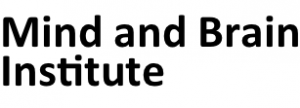How medical education creates its own patients
It has been a while – in December 2015 – that the renowned Journal of the American Medical Association (JAMA) has published a systematic review and meta-analysis on the prevalence of depression and depressive symptoms among medical residents (Mata et al., JAMA 2015; 314: 2373-2383). I was already aware of this article, but would like to take the opportunity of a recent communication I had with a medical student whose mentor I am as part of a mentoring program at the Aachen Medical Faculty, to report on this paper. The results of the first analysis were also confirmed by a similar study in medical students, published more recently also in JAMA by the same group (Rotenstein et al., JAMA 2016; 316: 2214-2236).

The authors of the first JAMA study found 54 studies (31 cross-sectional and 23 longitudinal studies) published in the period between 1963 and 2015, which studied the prevalence (percentage of a total population suffering from a certain disease) of depression or depressive symptoms in medical residents. They found a frighteningly high average value of 28.8%. That means that more than one in four physicians in residency showed depressive symptoms at the time of examination. Over the approximately 50 years of the study period, the prevalence increased statistically significantly.
The heterogeneity of the studies was very high, and the prevalence varied between 21% and 43%, depending on the applied rating instrument. The results were almost always based on self-ratings. A psychiatric interview – the gold standard, if a mental disorder is to be diagnosed – usually did not take place. However, even if these numbers are too high, they are nevertheless alarming.
In the second study published several months ago, the authors examined the prevalence of depression and depressive symptoms in medical students. A total of 183 studies from the period between 1982 to 2015 were investigated. Here too, the authors found a frighteningly high prevalence of on average 27%. Suicidal ideations were found in 11% of the study population. Thus, if I give a lecture in front of 200 students, then there are about 20 young people who are struggling with suicidal ideation! 16% of the medical students, who had been screened with symptoms of depression, had sought psychiatric treatment.
Unfortunately, my long experience as a psychiatrist is that many of our medical students and young colleagues are suffering profoundly from the enormous stress of their studies and their professional activities, and often this even leads to their breakdown. For a long time I have been thinking that this has to do with how we teach at medical schools and how our students learn. This was impressively confirmed, when the above-mentioned student – who is not herself affected – told me that every student at our faculty is continuously ranked according to his or her achievements. When you enter your personal site of the Faculty’s teaching and learning portal, you see your position in the ranking of all students of your cohort in the sidebar. This is how we create our patients!
This cultivates what the Stanford psychologist Carol Dweck calls “static mindset” (described in her excellent book “Mindset“). It compares and evaluates people on the basis of their performance, measures the value of the human being in the extreme case by means of his achievements – or by his position in the ranking. The attitude here is that it is not so important to develop personally, to unfold your potential and to become a competent doctor, but to ingest as much facts as possible in the shortest possible time to improve your position in the ranking. Many conversations with students of our faculty – and this will not be very different elsewhere – have shown to me that the entire duration of the study is mainly about being better than the others and not just that: You also have to constantly show them that you are better than them. That raises your self-awareness! But what if you show weakness? What if you suddenly drop a few places in the ranking? This destroys self-awareness, triggers stress, and ultimately leads to depression.
We must promote a dynamic mindset that is oriented towards personal growth and that creates critical minds, who also understand their medical education as a dynamic process in which to mature. The present model of “knowledge transfer” at our medical faculties is diametrically opposed to this, and it obviously makes our students, our residents and ourselves sick. The authors of the second JAMA study come to the conclusion: „Possible causes of depressive and suicidal symptomatology in medical students likely include stress and anxiety secondary to the competitiveness of medical school. Restructuring medical school curricula and student evaluations (such as using a pass-fail grading schema rather than a tiered grading schema and fostering collaborative group learning through a “flipped-classroom” education model) might ameliorate these stresses.“

